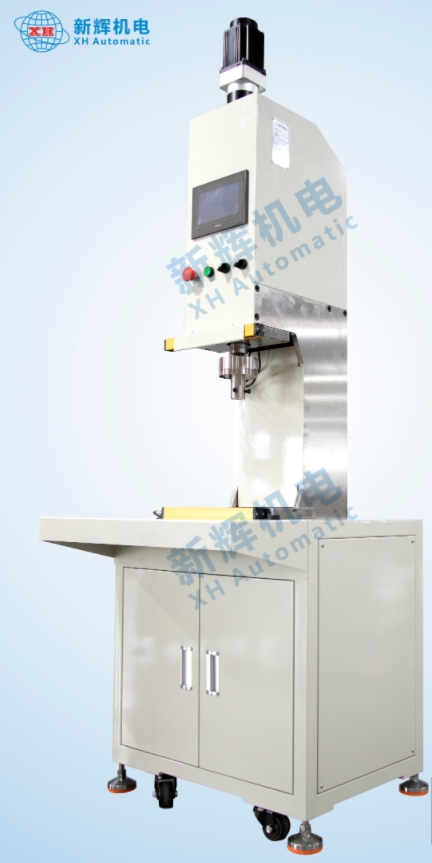What are the contents of manual servo press employee pre-service training?
Pre-employment training for manual servo presses is essential to ensure that employees operate the equipment properly. The training content covers equipment awareness, operational standards, maintenance and common trouble shooting, etc., for employees to quickly get to work to build a solid foundation.
1、Basic knowledge of equipment
Structural principles: detailed explanation of the mechanical structure of the manual servo press, including the body, slide, guide, transmission and other components, so that employees understand how each part of the synergistic operation to achieve the pressure exerted. Explain the components of the electrical system, such as servo motors, drives, controllers, etc., to illustrate their principles of controlling pressure, stroke and speed. For example, a schematic diagram shows the trajectory of a slide on a guideway and how a servomotor adjusts speed and torque in response to control signals.
Performance parameters: Introduce the key performance parameters of the press, such as extreme pressure, stroke range, speed adjustment range, table size, etc., so that employees are clear about the boundaries of the equipment's capabilities and understand the work scenarios to which different parameters apply. For example, the processing of small precision parts and large workpieces require different pressures and strokes, the need for reasonable setting parameters.

2、Operation process standardization
Pre-start inspection: Train employees to check the appearance of the equipment for damage, whether the connection parts are fastened, whether the lubrication system is normal, and whether the electrical wiring is broken or loose before starting the machine. For example, check the oil level of the guide rail lubrication point to ensure smooth movement of the slider.
Parameter setting: Teach employees to correctly set the pressure, stroke, speed and other parameters according to the requirements of the processing process. Emphasize the basis and method of setting, such as determining the pressure value according to the material and thickness of the workpiece, and entering the parameters through the control panel interface.
Operation steps: Demonstrate the standard operation process, from equipment startup, mold installation and debugging, workpiece placement and clamping, to pressure application, unloading and equipment shutdown after completion of processing. Emphasize the action points and sequence of each step, such as installing the mold to ensure accurate positioning, tighten the fixed bolts.
3、Precautions
Physical protection: Require employees to properly wear protective hats, protective gloves, protective shoes and other personal protective equipment when working to prevent injuries. Explain the role and use of equipment protection devices, such as light curtain protection device, when an object enters the danger zone will automatically stop the equipment operation.
Hazard identification: Point out potential hazards in the operation process, such as hands reaching into the mold room when the press is running, overloaded equipment operation, electrical short-circuits that cause fires, and so on. Through case studies, employees will understand the consequences of danger and raise their awareness of protection.
Emergency response: Train employees on how to respond in an emergency, such as pressing the emergency stop button immediately, reporting to superiors and taking initial troubleshooting measures when encountering equipment malfunctions, abnormal rattling or smoke. Organize emergency drills to ensure that employees are proficient in emergency procedures.
4、Daily maintenance
Cleaning and lubrication: Teach employees to regularly clean up dust, oil and debris on the surface of the equipment to keep the body neat and clean. Explain the location of each lubrication point and lubrication cycle, such as guide rails, screws and other parts need to be regularly coated with lubricant to ensure smooth mechanical movement.
Inspection and fastening: employees are required to check whether the connection of various parts of the equipment is loose, such as bolts, nuts, etc., and tighten them in time when they are found to be loose. Explain the inspection method and the use of tools, such as using a wrench to check the tightness of the bolt.
Reporting process: clarify the process of reporting equipment failure, so that employees know to whom to report, how to describe the failure phenomenon, such as recording the failure of the operation steps, equipment status and abnormal performance.
5、Common faults and handling
Fault identification: Introduce the common faults of manual servo presses, such as unstable pressure, slider jamming, electrical fault alarms, etc., through on-site demonstrations or pictures and video displays, so that employees are familiar with the fault phenomena.
Initial troubleshooting: Train employees to carry out simple troubleshooting, such as unstable pressure may be the pressure sensor failure or hydraulic system leakage, teach employees to check the sensor connection line, observe the hydraulic oil level and there is no sign of leakage.
Prohibited operation: Emphasize that employees should not disassemble or repair the equipment without clear faults or the permission of professional maintenance personnel to prevent more serious damage.
※ If you need help, please contact the technical specialist of Xinhui Electromechanical Equipment Co., Ltd. via the page chat tool for assistance.







